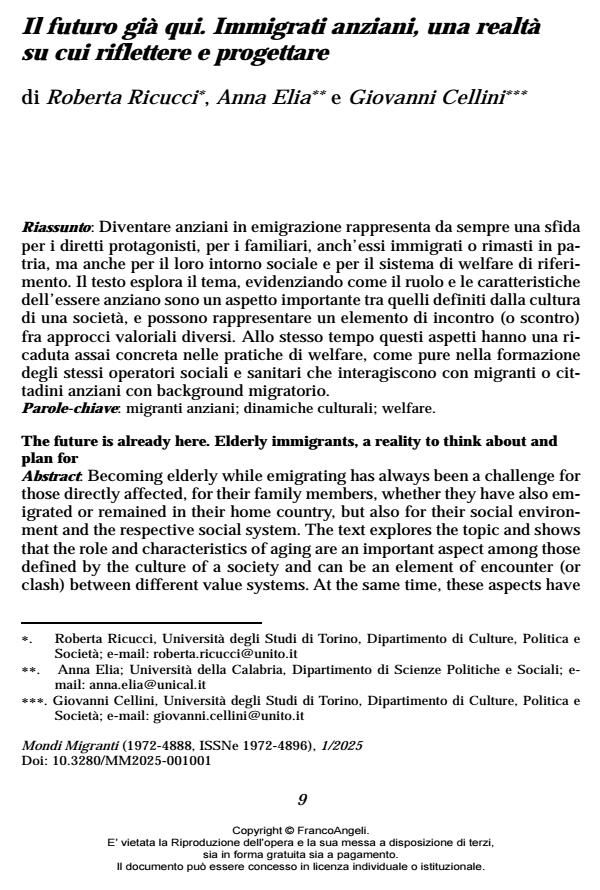The future is already here. Elderly immigrants, a reality to think about and plan for
Journal title MONDI MIGRANTI
Author/s Roberta Ricucci, Anna Elia, Giovanni Cellini
Publishing Year 2025 Issue 2025/1
Language Italian Pages 13 P. 9-21 File size 72 KB
DOI 10.3280/MM2025-001001
DOI is like a bar code for intellectual property: to have more infomation
click here
Below, you can see the article first page
If you want to buy this article in PDF format, you can do it, following the instructions to buy download credits

FrancoAngeli is member of Publishers International Linking Association, Inc (PILA), a not-for-profit association which run the CrossRef service enabling links to and from online scholarly content.
Becoming elderly while emigrating has always been a challenge for those directly affected, for their family members, whether they have also emigrated or remained in their home country, but also for their social environment and the respective social system. The text explores the topic and shows that the role and characteristics of aging are an important aspect among those defined by the culture of a society and can be an element of encounter (or clash) between different value systems. At the same time, these aspects have very concrete implications for social care practice and for the training of social and health professionals dealing with older migrants or citizens with a migrant background.
Keywords: elderly migrants; cultural dynamics; welfare.
Roberta Ricucci, Anna Elia, Giovanni Cellini, Il futuro già qui. Immigrati anziani, una realtà su cui riflettere e progettare in "MONDI MIGRANTI" 1/2025, pp 9-21, DOI: 10.3280/MM2025-001001